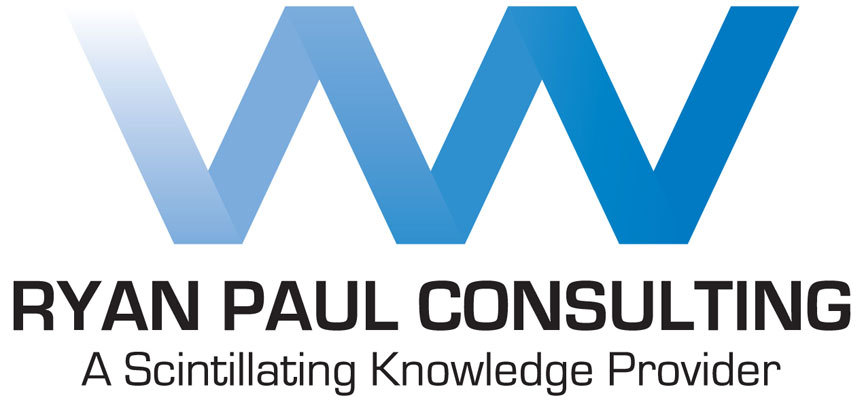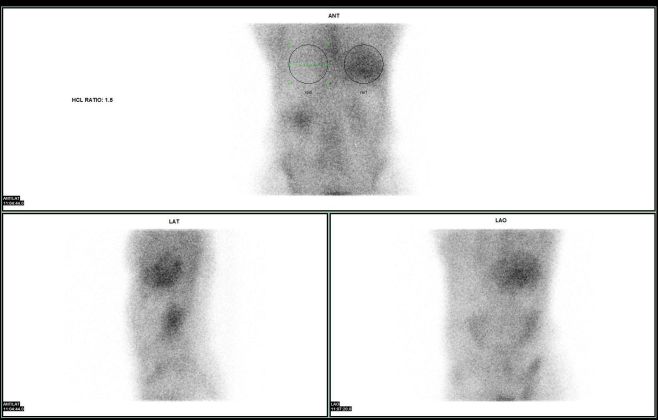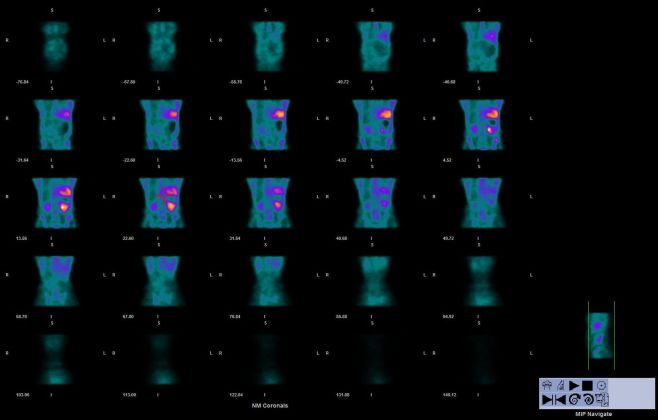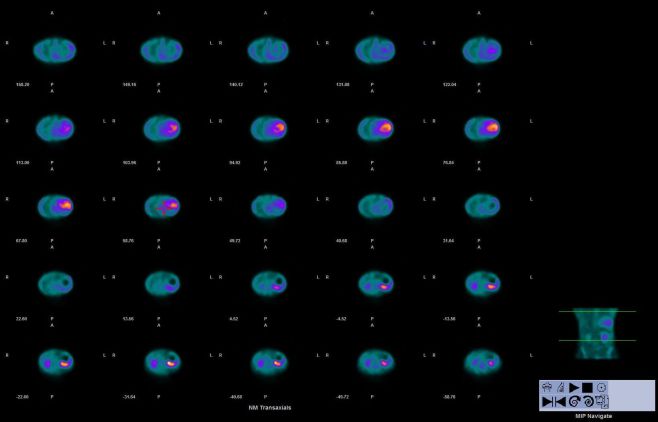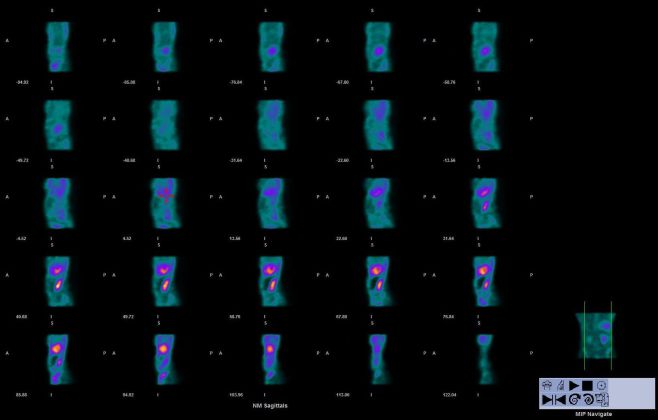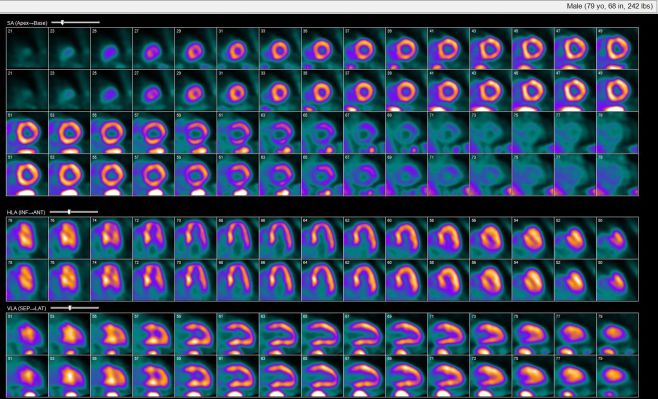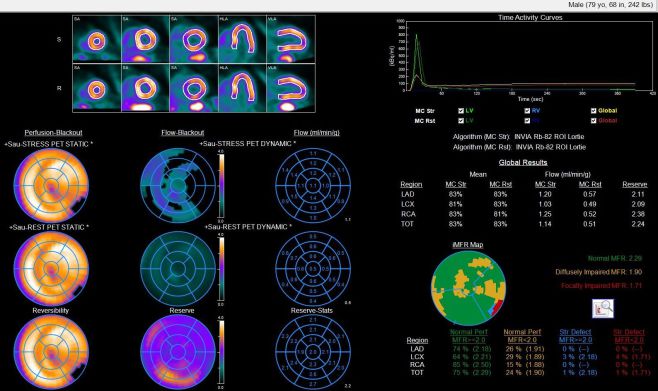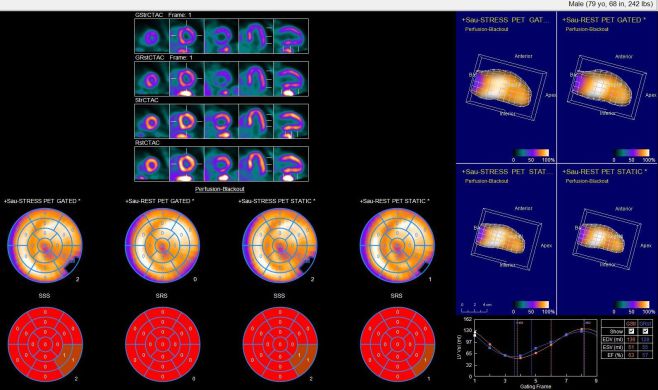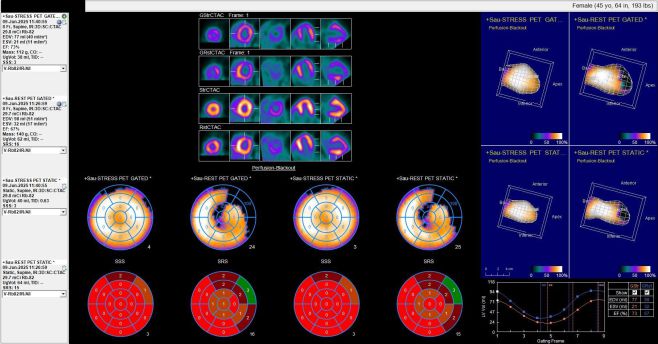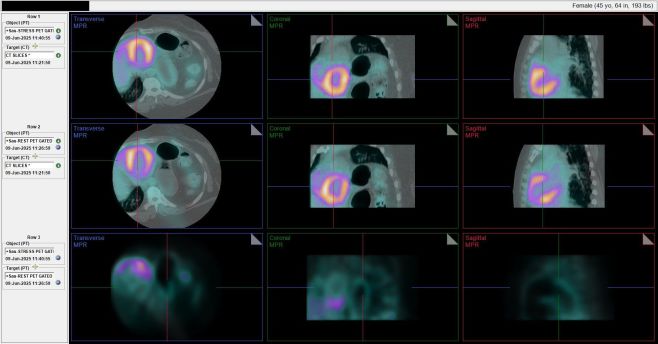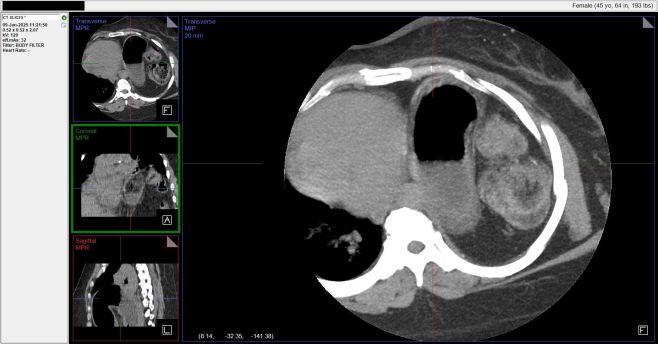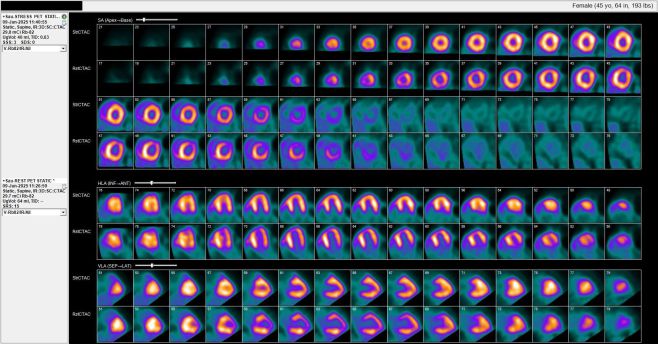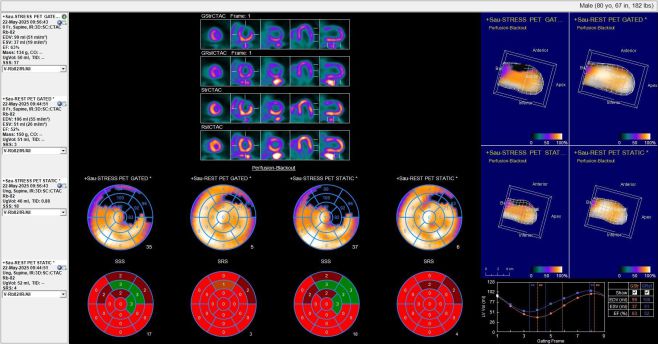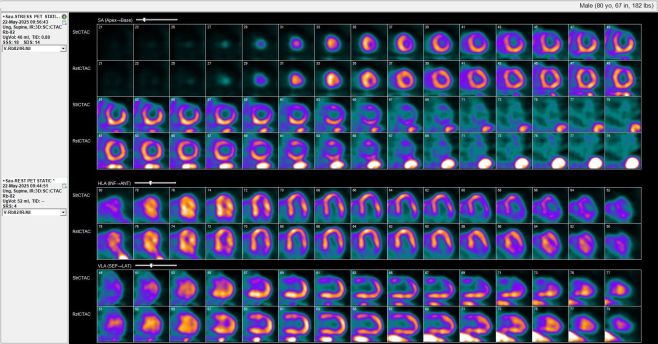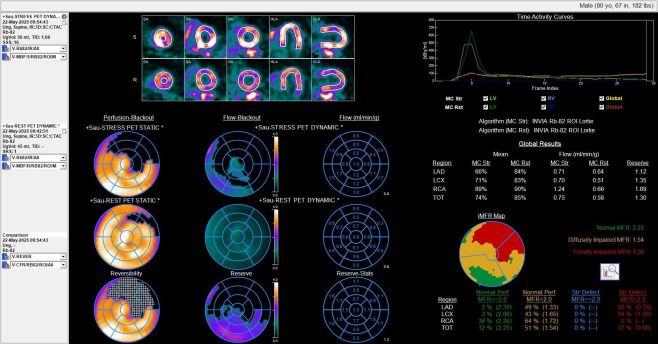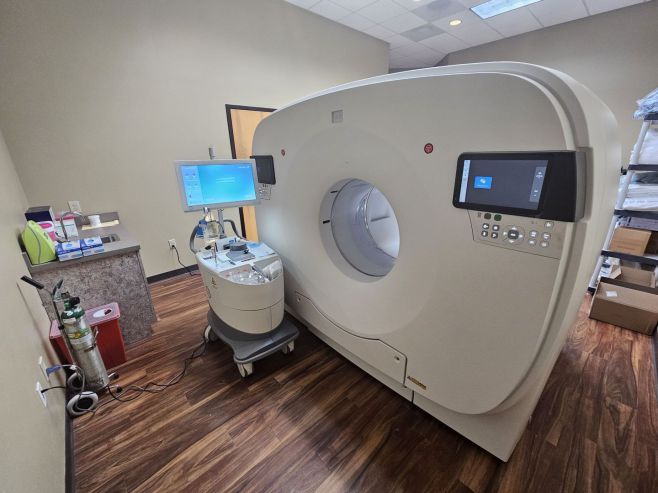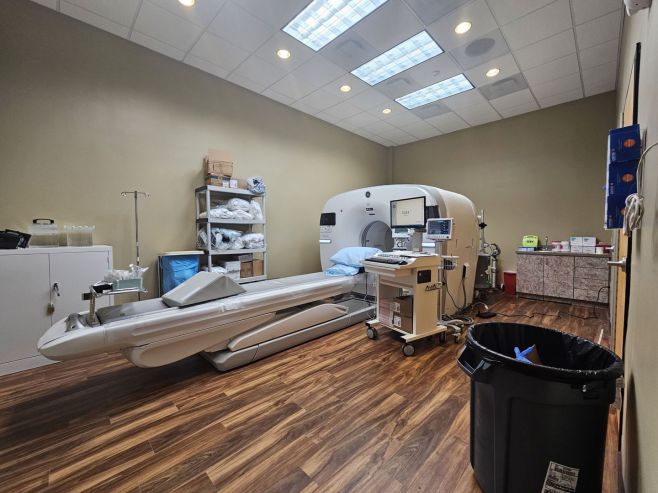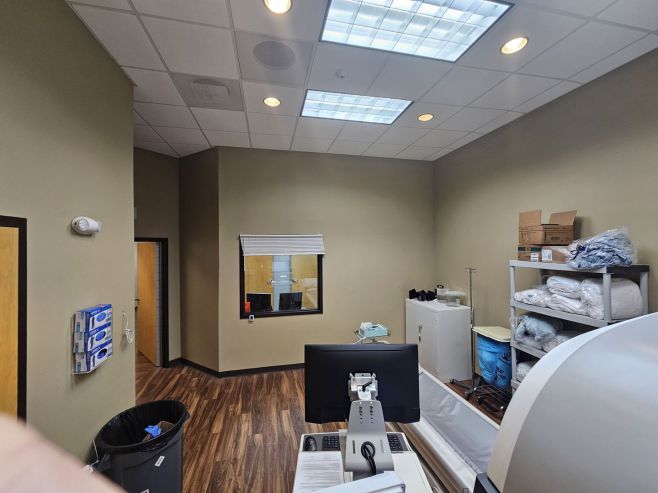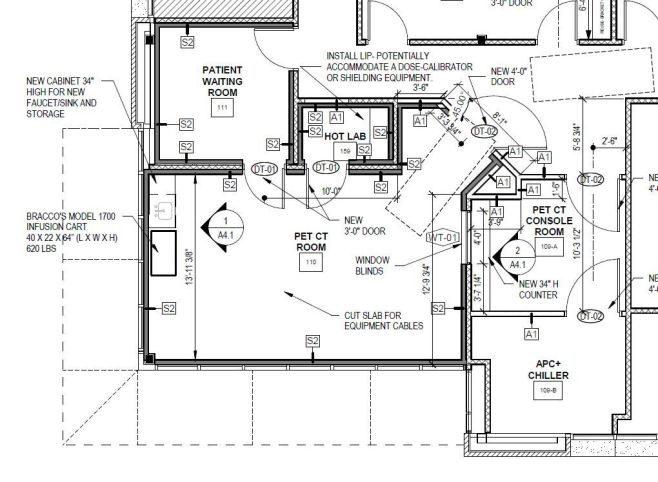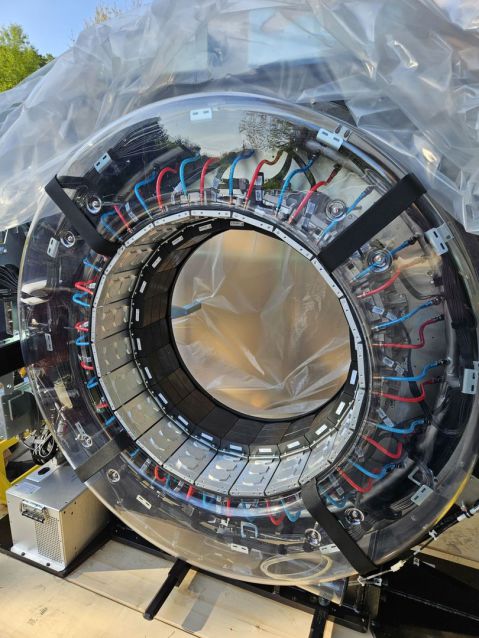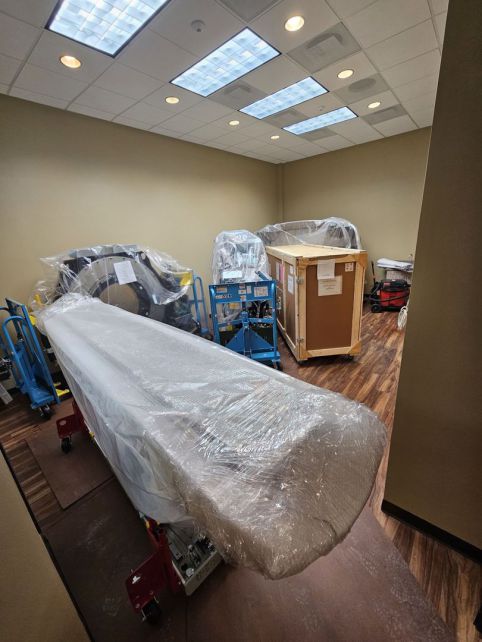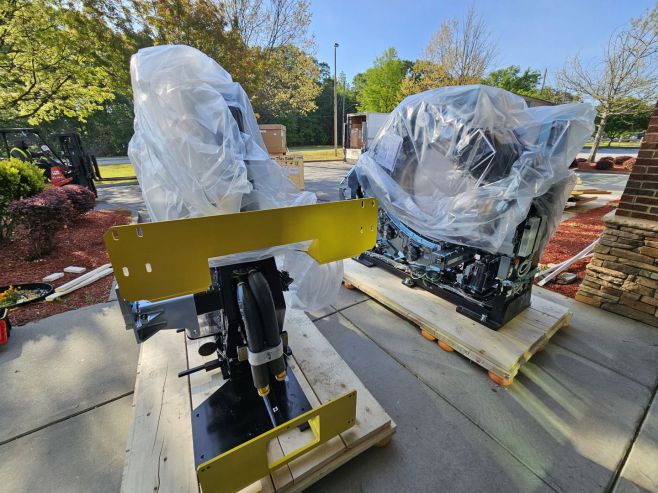2025 Blog Entries
12/3/25
Thanks to signing up for Wordsmarts.com’s
brilliant “Word of the Day” newsletter, I just learned why “OK” is the most universally recognized word on the planet: it all started with a silly 1830s Boston craze for intentional misspellings
(“oll korrect” = all correct) that went viral during Martin Van Buren’s 1840 “Old Kinderhook” presidential campaign, complete with “OK Clubs” and the slogan “OK is OK.” The telegraph later sealed its
fate as the shortest, clearest “all clear,” and even Woodrow Wilson preferred spelling it “okeh” on official documents.
In our lightning-fast business world, it’s a perfect reminder that some of today’s most powerful communication tools began as playful
experiments.
If you love these kinds of daily gems, I highly recommend subscribing to Wordsmarts’ Word of the Day yourself!
12/1/25
Withings just launched BeamO, a CES 2024 multi-award-winning device that compresses an entire at-home check-up into a single, elegant handheld tool smaller
than a TV remote. In under 60 seconds, BeamO delivers clinical-grade core temperature (contactless temporal artery), a medical-grade 1-lead ECG with AFib detection, oxygenated blood measurement,
heart rate, and a piezoelectric digital stethoscope for heart and lung auscultation—all guided by on-device instructions and powered by AI-driven interpretation in the Withings
app.
For clinicians, telehealth providers, and health-system partners, it generates shareable PDF reports, offers real-time HealthLink streaming to EHRs, and
includes cardiologist-reviewed ECGs through Withings+.
As healthcare continues its shift toward proactive, consumer-initiated monitoring, BeamO positions itself as the new household vital-sign benchmark—perfect for
remote patient monitoring programs, chronic-condition management, and reducing unnecessary office visits. Available now at withings.com/beam-o
for $249.95.
11/29/25
If you've been around cardiac SPECT as long as I have, you know reverse redistribution (RR) patterns have always been that quirky thing we spot now and
then.
This recent study out of the Journal of Nuclear Cardiology really digs into it.
https://lnkd.in/eUXuefaT
They did a retrospective case-control look at 305 patients who were being checked for suspected coronary artery disease. Out of that group, about 19%—59
people—showed RR on a standard two-day MPI protocol. To make things fair, they used propensity score matching based on age, sex, stenosis severity, and the type of stress imaging, ending up with 28
matched pairs: one side with RR, the other with normal perfusion. All these folks had coronary angiography done, plus attenuation correction to rule out things like breast or diaphragm
interference.
What they found was pretty eye-opening. The RR group had way more positive stress test ECGs—39% versus zilch in the normal group, with a p-value under .001.
Then there's this newer metric, angiography-derived microvascular resistance (AMR), which was higher in the RR folks: 3.49 ± 0.62 compared to 3.05 ± 0.40, p = .005. But the quantitative flow ratio
(QFR), which checks for big-vessel blockages, was basically the same in both groups—around 0.88 and 0.87, p = .44. That tells us there's no major macrovascular disease at play
here.
So, boiling it down, RR seems to point toward coronary microvascular dysfunction. Now, this is rather coincidental: did anyone else read the latest device that
treats coronary microvascular disease that happened to rake in $23million in funding? Pure serendipity. https://vahaticor.com/
11/27/25
Are certain CON (certificate of need) laws unconstitutional?
Dr. Jay Singleton, an ophthalmologist who owns Singleton Vision Center in New Bern, North Carolina, contends that the state’s Certificate of Need (CON) laws
are unconstitutional and run afoul of North Carolina’s constitutional ban on monopolies.
His lawsuit was initially thrown out by a Wake County Superior Court judge on June 11, 2021. On October 18, 2024, however, the North Carolina Supreme Court
unanimously breathed new life into the challenge with a short, unsigned four-page opinion that reversed the dismissal but declined to resolve the constitutional issues
itself.
The case now heads back to Superior Court, where a special three-judge panel will decide whether the CON statute is
lawful.
Could the end result of this panel possibly overturn the CON laws found in 35 states, including Washington DC?
11/22/25
Imagine your cardiologist scribbling on a prescription pad: "Take two cups of black coffee orally each morning."
In this multicenter randomized clinical trial including 200 patients with persistent AF undergoing cardioversion, the risk of recurrent AF was significantly
lower in the group allocated to coffee consumption (47%) compared with the abstinence group (64%).
11/12/25
Over the past six months, we've seen an incredible surge in amyloid imaging volumes across our network. What was once a specialized procedure has now become a
daily routine at many of our facilities, reflecting its growing demand as a powerful diagnostic tool.
To illustrate just how impactful these scans can be, here's one of our most recent standout results: a highly positive amyloid scan with an impressive HCL
ratio of 1.5 and a Grade III visual score. The patients history was syncope, atrial fibrillation, and heart failure.
11/10/25
Looks like the CT plaque analysis market is starting to get crowded, which is always good thing!
https://lnkd.in/edwhTvca
10/15/25
An apparel trend I didn't even know existed: EMF-blocking clothing.
HAVN's EMF-blocking clothing, with its silver-infused fabrics, promises to shield you from WiFi and 5G radiation, but when taking into consideration silver's
mass attenuation coeffecient, thin layers could potentially mess with CT and nuclear medicine scans like PET,or SPECT. The silver threads could theoreticaly block or scatter the gamma rays needed for
clear images, potentially causing artifacts, especially in sensitive areas like the pelvis or chest if you're wearing their underwear or bras.
For all you imagers out there: what are you experiences with silver infused clothing like HAVN's EMF-blocking brand of
clothing?
https://havnwear.com/
10/10/25
Preach! AHS is a massive advocate for prone imaging.
https://tech.snmjournals.org/content/52/4/328
Some quick stats from the JNC:
-Combining supine with prone imaging yielded significant gains in specificity (86% vs 65%) and accuracy (86% vs 79%) over supine-only
quantification.
-A population of 168 women with correlating angiography and 291 with a low likelihood of CAD was studied, and it was found that the combined prone-supine
quantification approach increased specificity for CAD detection to 94% from 61% (supine).
10/2/25
Advancing nuclear medicine relies on detectors that can capture radiation with both high energy and spatial precision. A new frontier is emerging with perovskite semiconductors—materials that hold enormous promise for transforming radiation
detection.
By eliminating charge losses at the detector surface, these devices deliver uniform performance, long-term stability, and nearly perfect charge collection
efficiency. The result? Exceptional energy resolution—measured at 2.5% for 141 keV and just 1.0% for 662 keV—setting new benchmarks in the field.
Even more exciting, single-photon imaging tests with 99mTc γ-ray sources demonstrated remarkable sensitivity (0.13–0.21% cps/Bq) and clear phantom imaging with
a spatial resolution of 3.2 mm. This means detectors can distinguish fine details, such as individual sources spaced only 7 mm apart.
With continued development, perovskite semiconductors are lower-cost and solution-processable, which could eventually make advanced imaging more accessible and
widespread.
8/25/25
I'm suddenly having a case of deja vu: haven't we seen this play out before with Northstar, who discontinued its non-HEU molybdenum-99
(Mo-99) production in October 2023 due to unsustainable costs and competition from subsidized foreign reactors?
The cost per unit dose will remain the key factor, even with the proposed $10 additional reimbursement payment.
-NNSA has selected SHINE Technologies, LLC (SHINE) for $32 million in funding and expects to finalize the award by December 2025 to support completion of the
company’s Mo-99 production facility in Janesville, Wisconsin. The facility is currently approximately 75% complete. This funding will support SHINE’s efforts to complete the construction required for
initial Mo-99 production.
-In July 2025, CMS issued the Calendar Year 2026 Medicare Hospital Outpatient Prospective Payment System and Ambulatory Surgical Center Payment
System proposed rule. The proposed rule includes a $10 add-on payment for radiopharmaceuticals derived from domestically produced Mo-99 starting January 1, 2026. This would encourage
hospitals and certain other providers to use domestically produced Tc-99m radiopharmaceuticals when available by addressing the cost difference between domestic and foreign
sources.
8/22/25
A research team from the University of California, Santa Cruz, has developed an innovative system called Pulse-Fi that uses Wi-Fi signals to measure heart rate
with clinical accuracy, eliminating the need for wearable devices.
By leveraging low-cost ESP32 chips and machine learning algorithms, Pulse-Fi detects subtle changes in Wi-Fi signals caused by a beating heart, achieving an
error margin of just half a beat per minute after five seconds of monitoring.
The system works reliably across various body positions and up to three meters away, with potential for greater distances, and could extend to monitoring
breathing rates for conditions like sleep apnea.
This breakthrough, published in the 2025 IEEE International Conference on Distributed Computing in Smart Systems and the Internet of Things, promises
affordable, non-invasive health monitoring using existing household Wi-Fi infrastructure.
8/20/25
Quick thought: why build the Jiangmen Underground Neutrino Observatory (JUNO) in China's southern Guangdong province, and not somewhere within the SAA (South Atlantic Anomoly) a region of weakened geomagnetic field centered in southeast South America?
8/10/25
Studies that make you go "Huh?"
The calcium score is 4,025, with widespread distribution across all three coronary arteries.
PET MBF's are shockingly normal.
Normal increasing rest and stress ejection fractions.
Would have been interesting to have AI-QCT and CT-FFR (e.g. Cleerly, Heartflow) values to compare findings.
Guess we'll see what the cardiac catheterization shows?
**Update** - cardiac cath revealed the following:
50% ostial RCA lesion
20% proximal LAD lesion
8/4/25
Coming to a CVS & Walgreens near you, starting 2026: over the counter cuff-less blood pressure bands.
"Aktiia, a Swiss medtech company that recently started trading under the name Hilo, has received U.S. Food and Drug Administration (FDA) clearance
for the over-the-counter use of its cuffless blood monitoring technology. The Hilo Band, which has already gained CE mark approval, should make its U.S. debut in
2026.
The Hilo Band was designed with
patient comfort in mind and works with a smartphone app that helps patients stay on top of their health at all times. Users calibrate the device using a provided cuff to get started, but then the
cuff no longer needs to be worn. According to Aktiia, the Hilo Band’s impact on the hypertension market will be comparable to what the launch of Apple’s first iPhone meant for mobile phone
technology.
“This is not just a regulatory win: it's the start of a paradigm shift in hypertension management,” Josep Sola, co-founder and chief technology of Aktiia,
said in a statement. “With FDA's OTC clearance, we are breaking down the barriers that have kept cuffless blood pressure monitoring out of the hands of
millions.”
7/12/25
Decoding Raynaud’s and Cardiac Risks with Rubidium-82 PET derived MFR's
"A 2021 study published in The Journal of Rheumatology utilized advanced 82-rubidium PET/CT imaging to explore the relationship between Raynaud’s phenomenon
(RP) and coronary microvascular dysfunction (CMD) in patients with systemic sclerosis (SSc) and other autoimmune rheumatic diseases (AIRD).
The findings revealed that patients with SSc, particularly those with secondary RP, exhibited significantly reduced MFR compared to controls, suggesting
impaired myocardial perfusion and a higher risk of subclinical cardiovascular disease.
The research highlights that secondary RP, often linked to AIRDs like systemic lupus erythematosus, rheumatoid arthritis, and SSc, is associated with more
severe reductions in MFR than primary RP, which showed no significant difference from controls. This distinction underscores the impact of underlying autoimmune conditions on coronary microvascular
health, driven by factors such as systemic inflammation and treatment side effects (e.g., glucocorticoids).
The study’s use of PET/CT with 82-rubidium, a validated technique for assessing myocardial perfusion, emphasizes its potential for early detection of CMD in
at-risk patients, which is critical for preventing cardiovascular complications."
1574.full.pdf
Adobe Acrobat document [623.0 KB]
7/5/25
Hot off the press!
"Researchers have discovered that gut bacteria produce a molecule that not only induces but also causes atherosclerosis, the accumulation of fat and
cholesterol in the arteries that can lead to heart attacks and strokes.
The new results show that some gut bacteria, in certain states, produce imidazole propionate, a simple molecule with six carbon atoms, eight hydrogen atoms,
two nitrogen atoms, and two oxygen atoms (C₆H₈N₂O₂). This compound enters the blood, interacts with immature white blood cells, and triggers an inflammatory reaction in the arteries, which promotes
the buildup of fatty plaques.
The research, conducted using expensive and complex techniques such as computed axial tomography (CAT) and positron emission tomography (PET), has made it
possible to detect high levels of imidazole propionate in the very early stages of atherosclerosis, which could greatly facilitate diagnosis at that invisible stage when a person is unknowingly at
risk."
s41586-025-09263-w.pdf
Adobe Acrobat document [48.9 MB]
6/26/25
"This marks the first time that a triple combination medication has been indicated for initial therapy in patients who are likely to need multiple drugs to
achieve blood pressure goals."
-Novel, single pill, triple combination with a standard dose and two lower doses that can deliver the efficacy benefits of combination therapy, with an
established safety profile and good tolerability
-First and only triple combination for the initial treatment of hypertension
-Commercialization planning underway with US launch anticipated Q4 2025
https://george-medicines.com/george-medicines-announces-fda-approval-of-widaplik-telmisartan-amlodipine-and-indapamide-a-new-single-pill-combination-treatment-for-hypertension-in-adults-including-initial-treatment/
6/20/25
Kudos to my team for bringing this cardiac PET patient's study into the 'What-in-the-what-what?' spotlight.
No, they don't have situs inversus.
Yes, the patient was on oxygen.
Yes, it took the corralling of nuclear and CT technologists to figure this one out.
Yes, I believe we found the cause of their shortness of breath (Hint: it's not from CAD).
6/5/25
Here's a confounding JACC study that I'm sure will incite some heavy debate: Males with high-volume exercise training (>3,000 MET-min/wk) exhibited a higher burden of calcified plaque by CAC score than male nonathletes, while no such difference was observed in female athletes.
abdelaziz-et-al-2025-sex-differences-in-[...]
Adobe Acrobat document [1.5 MB]
6/2/25
Over the past six months, our team embarked on an ambitious journey to convert a 2200-square-foot space into a state-of-the-art PET CT department. We’re
thrilled to announce that the department is fully operational, ready to serve patients with advanced cardiac imaging!
This project could not have been successful without the following partnerships:
Planning and Design: Laying the Foundation
Gary B. Coursey & Associates, Architects
Construction and Challenges: Building with Precision
Schoppman Company, Inc.
Consulting Physicist:
Alliance Medical Physics
Installation and Testing: Bringing Technology to Life
GE HealthCare
Bracco
INVIA Medical Imaging Solutions
Other essential vendors:
Henry Schein
Cardinal Health
Lynn Medical
Pinestar Technology Inc
Jaken Medical Inc
Radiation Detection Company
Marketlab
ImageFIRST
Medispose Waste Solutions, LLC
5/29/25
Woah!
Trump signed an
executive order to completely overhaul the Nuclear Regulatory Commission (NRC). The overall goal is aiming to revitalize the U.S. nuclear energy sector, driven in part by the surging power
demands of AI data centers.
The order mandates a comprehensive reform of the NRC’s structure and regulations to expedite nuclear reactor licensing and promote innovative technologies. It
sets fixed deadlines, including 18 months for new reactor licenses and 12 months for existing reactor operations, while directing the NRC to consider nuclear power’s economic and national security
benefits alongside safety. The overhaul involves reorganizing the NRC in consultation with the Department of Government Efficiency (DOGE) Team to align with congressional directives and reduce
regulatory barriers, addressing decades of stagnation in nuclear development.
And I'll be damned: check out Section 5(b). Finally - the LNT model is being challenged (I have written many, many blogs on the LNT models
short-comings):
(b) Adopt science-based radiation limits. In particular, the NRC shall reconsider reliance on the linear no-threshold (LNT) model for radiation
exposure and the “as low as reasonably achievable” standard, which is predicated on LNT. Those models are flawed, as discussed in section 1 of this order.
5/27/25
In the technology sector, companies like Google and Meta leverage Restricted Stock Units (RSUs) to attract, retain, and motivate top talent by giving employees
a stake in the company’s success.
So, I thought - why can't healthcare adopt a similar strategy, for non-physicians, to further attract and retain talent, all while enhancing overall
care?
Attached is a brief 'deep dive' on the proposed concept!
a hypothetical model inspired by tech’s [...]
Adobe Acrobat document [187.4 KB]
5/26/25
The U.S. government has known
about the radioactive contamination of Coldwater Creek since at least 1949. Documents reveal that Mallinckrodt Chemical Works, which processed uranium for the Manhattan Project, was aware as
early as 1949 that radioactive waste stored in deteriorating barrels near the creek posed a contamination risk. Federal officials and private companies involved in the nuclear program documented
these risks but often downplayed them as “slight,” “minimal,” or “low-level,” delaying public acknowledgment and action for decades.
It wasn't until 1989 — 40 years after the waste was first dumped — that the Environmental Protection Agency classified the area
as hazardous.
5/9/25
I had the pleasure of experiencing a super-smooth PET|CT installation this past weekened with massive kudos going out to both
GE
and
Schoppman Company, Inc..
On a side-note: the engineering behind the PET rings cooling system had me mesmerized!
5/6/25
Oh boy!
This article is seriously going to ruffle some feathers, especially physicists that decry the LNT hypothesis model.
https://lnkd.in/ex9yXJAw
Radiation hormesis is a real hot topic (pun intended!) in the nuclear medicine community. One of my favorite presentations on the subject is attached by
Dr.Bennett S. Greenspan, MD, MS, past president, SNMMI & SE Chapter.
Studies similar to Dr.Rebecca Smith-Bindman have always make me question: wouldn't healthcare workers in the fluoro lab be a more accurate cohort to study
projected lifetime cancer risks?
Sunday+930am+Soc+Nuc+Med+Greenspan.pdf
Adobe Acrobat document [583.7 KB]
4/10/25
"From 2012-2022, 26 accredited nuclear medicine programs were discontinued, accounting for a 26.8% decrease in active programs. From 2012 to 2021, the total
number of graduating students from nuclear medicine programs decreased by 397 students, representing a 43% decline."
If there are fewer programs and fewer graduates, that means there's less supply of nuclear medicine technologists entering the field. Assuming the demand for
these professionals remains the same or increases, basic economics would suggest that the value of those who are in the field or entering it would go up. So, scarcity should lead to higher salaries,
better job security, or more opportunities for those who do have the skills, right?
Or to counter that, should we also consider why these programs are closing and why fewer students are graduating. Is it because of decreased demand for nuclear
medicine services? Changes in healthcare technology? Funding issues for educational programs? Or maybe shifts in career interests among students?
3/9/25
The post-COVID era on healthcare has been absolutely brutal, especially for hospitals.
Across the US, hospital
closures have become increasingly common, particularly in rural areas. Financial instability, driven by declining patient volumes, rising operational costs, and inadequate reimbursement rates,
has forced many facilities to shut their doors. Rural hospitals are especially vulnerable, often serving as the sole healthcare provider for vast regions. When these hospitals close, patients must
travel long distances for care, a burden that disproportionately affects the elderly, low-income individuals, and those with chronic conditions.
Georgia currently has 20 hospitals (29% state wide) at risk of closing, 10 risking closure within the next 2-3 years.
Congress has not acted on the rise of hospital closures due to a mixed bag of political gridlock, the intricate nature of the healthcare system, lobbying
pressures, limited public awareness, debates over federal versus state roles, the high cost of intervention, competing legislative priorities, lack of stakeholder agreement, reliance on market-based
outcomes, and inadequate data to guide policy. These factors collectively create a challenging environment for meaningful legislative progress, leaving the issue of hospital closures largely
unaddressed at the federal level.
3/3/25
Imagine a world where the humble oyster, that briny jewel of the sea, holds the key to supercharging our battle against bacterial foes. Beneath its rugged
shell lies a secret weapon—oyster blood, a crimson elixir brimming with untapped potential.
Scientists are diving into this oceanic oddity, discovering that its unique compounds might just turbocharge conventional
antibiotics.
It’s a tale of nature’s underdog teaming up with modern medicine, proving that even the muckiest mollusks could be humanity’s next big
hope.
2/20/25
Working many years in the cardiovascular imaging environment often reveals the profound impact of high cholesterol on patients, particularly through conditions
like xanthelasma around the eyes.
While podcasts promoting fad diets like the carnivore diet can sound appealing due to anecdotal success stories, they often ignore the risks of extreme dietary
restrictions, such as nutrient deficiencies, heart disease, and digestive issues.
Coming direct from JAMA: A man in his 40s presented with a
3-week history of asymptomatic yellowish nodules on his palms, soles, and elbows. The patient adopted a carnivore diet approximately 8 months before presentation. His dietary habits included a
high intake of fats, consisting of 6 to 9 lb of cheese, sticks of butter, and additional fat incorporated into his daily hamburgers. Physical examination revealed multiple painless yellowish
nodules on his palms and elbows. The patient’s cholesterol level exceeded 1000.
2/15/25
Supporting approximately 43,200 photomultiplier tubes, the Jiangmen Underground Neutrino Observatory (JUNO) is a medium
baseline reactor neutrino experiment under construction at Kaiping, Jiangmen in Guangdong province in
Southern China.
The major goals of JUNO is determining neutrino mass hierarchy by precisely measuring the energy spectrum of reactor electron antineutrinos at a distance of
~53 km from the reactors, observe supernova neutrinos, study the atmospheric, solar neutrinos and geo-neutrinos, and perform exotic searches, with a 20-thousand-ton liquid scintillator detector of
unprecedented 3% energy resolution (at 1 MeV) at 700-meter deep underground.
Starting back in December of 2024, the liquid filling process will be carried out in two stages. During the next two months, the inner and outer spaces of the
acrylic sphere will be filled with ultrapure water. Over the following six months, the ultrapure water inside the acrylic sphere will be replaced with liquid scintillator, a mixture of linear alkyl
benzene (LAB), 2.5 g/L of 2,5-diphenyloxazole (PPO) and 3 mg/L of 1,4-Bis(2-methylstyryl)benzene (Bis-MSB). Data collection will begin in August 2025.
1/10/2025
Phew! What a crazy last three months. Here's what was on my plate:
1. Upgraded eight locations ultrasound systems to GE's T9 Premium.
2. Upgraded all eight locations GE Echopac systems.
3. Expanded our Amyloid imaging protocol to two additional locations, now totalling four that offer this exam.
4. Integrated
Cleerly's
ISCHEMIA technology at our Tucker and Suwanee locations. AI-QCT combined with CT derived FFR's are now being performed on both CT systems.
5. Switching our primary UEA from Optison to
Lantheus'
Definity.
6. Construction begins on January 25 to make way for our new GE Omni Legend PET/CT system.
7. Signed up for
Bracco's
Cardiogen-82 generator.
8. In the process of integrating StudyCast to optimize imaging workflow.
9. Strategizing with our GPO's
Vizient, Inc
and
Premier Inc.
to leverage purchasing power with contracted vendors.
10. Exploring our Tucker X-Ray system to be possibly converted to digital.
11. Amended our Georgia Radioactive Materials License for Cardiac PET through the newly implemented CON exclusion rule.
12. Integrating
ZOLL Medical
Corporation's
Home Sleep Apnea disposable WatchPAT devices across all eight AHS locations.
13. Integrated
Nuance
Communications's
PowerShare proxy.
14. Switched over to Spectrum X-Ray as our main IV contrast and CT power-injector syringe vendor for significant savings.
15. Expanding
Medispose Waste Solutions,
LLC
by incorporating affiliated shredding services for further savings.
As we step into 2025, the outlook for growth is brighter than ever.
Bring it on!
